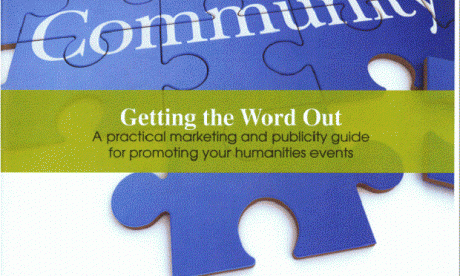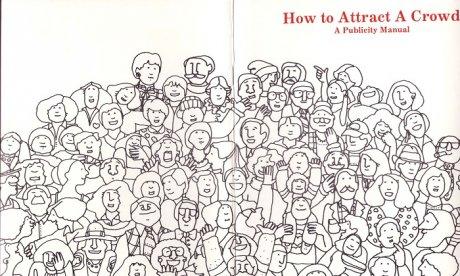'How to Attract a Crowd,' Then and Now

'Getting the Word Out,' NJCH's new marketing guide
New Jersey Council for the Humanities

'Getting the Word Out,' NJCH's new marketing guide
New Jersey Council for the Humanities
The New Jersey Council for the Humanities hopes it has made advertising humanities events a little more user-friendly. Between planning when and what to tweet, getting word of mouth going, and drawing up that eye-catching flyer, an effective ad campaign is multi-fronted and takes some savvy to put together. The NJCH’s Speaker’s Bureau speakers and the venues that host them consistently reported difficulties attracting the large crowds they hoped for. In response, the NJCH went to the experts. Hiring a local marketing firm, they developed and published a publicity manual for those speakers and community organizations.
They have graciously made the manual, ‘Getting the Word Out: A Practical Marketing and Publicity Guide for Promoting Your Humanities Events,’ available for free online. It guides the reader through the beginning phases of planning to the days before the event. The campaign starts with ‘segmenting event audiences,’ proceeds to developing print advertisements, and ends with a comparison of the different online forums to advertise on and how best to use them (Twitter at least daily, Facebook at least weekly, and LinkedIn at least bi-weekly). The Council encourages all grantees to use the manual. Briann Greenfield, Executive Director of the NJCH, says the NJCH also ‘worked with the Middlesex County Cultural & Heritage Commission, which sponsored ‘Getting the Word Out: A Marketing Workshop,’ with John Seitter, Executive Director of the Roebling Museum and former president of the South Jersey Tourism Corporation.’
We in Fed/State were delighted at the timing of finding the NJCH’s guide. In the process of digitizing our files from years gone by, Meg McReynolds had come across a similar product from 1980, produced by The Committee for the Humanities in Alabama (now Alabama Humanities). You can find it on Archive.org here, but without the stellar cover illustration that you see in the gallery above.
The more things change, the more they stay the same. Yes, the Alabama manual wears its age on its sleeve: in ‘The Mechanics of Writing a Press Release,’ you are instructed in how many carbon copies to turn into the local newspaper (just one). Yet ‘Newsletters: How to Find and Use Them’ ends with a quip still sterling: ‘Brevity usually helps your chances.’
Take a look at NJCH’s manual and consider making use of it. Thanks, NJCH, for making it available to all.
